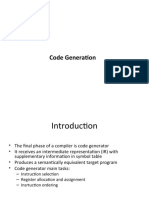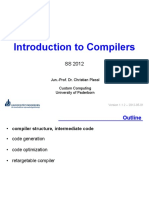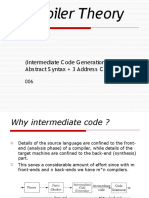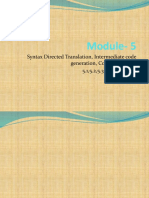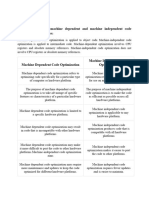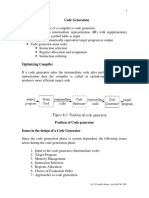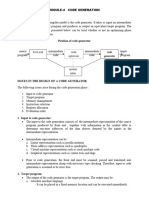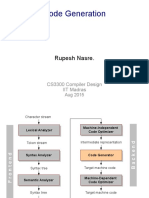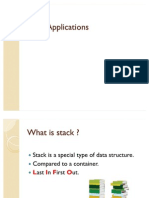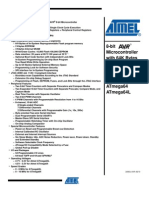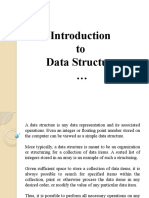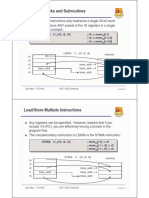0% found this document useful (0 votes)
46 views9 pagesCode Generation in Compilation
The document discusses the code generation phase of compilation, detailing the transformation of intermediate code into machine or assembly code. It outlines the characteristics and requirements of the target program, tasks of the code generator, and issues related to correctness and efficiency. Additionally, it covers instruction selection, register allocation, evaluation order, and the cost associated with instructions in various addressing modes.
Uploaded by
codehacker026Copyright
© © All Rights Reserved
We take content rights seriously. If you suspect this is your content, claim it here.
Available Formats
Download as DOCX, PDF, TXT or read online on Scribd
0% found this document useful (0 votes)
46 views9 pagesCode Generation in Compilation
The document discusses the code generation phase of compilation, detailing the transformation of intermediate code into machine or assembly code. It outlines the characteristics and requirements of the target program, tasks of the code generator, and issues related to correctness and efficiency. Additionally, it covers instruction selection, register allocation, evaluation order, and the cost associated with instructions in various addressing modes.
Uploaded by
codehacker026Copyright
© © All Rights Reserved
We take content rights seriously. If you suspect this is your content, claim it here.
Available Formats
Download as DOCX, PDF, TXT or read online on Scribd
/ 9











